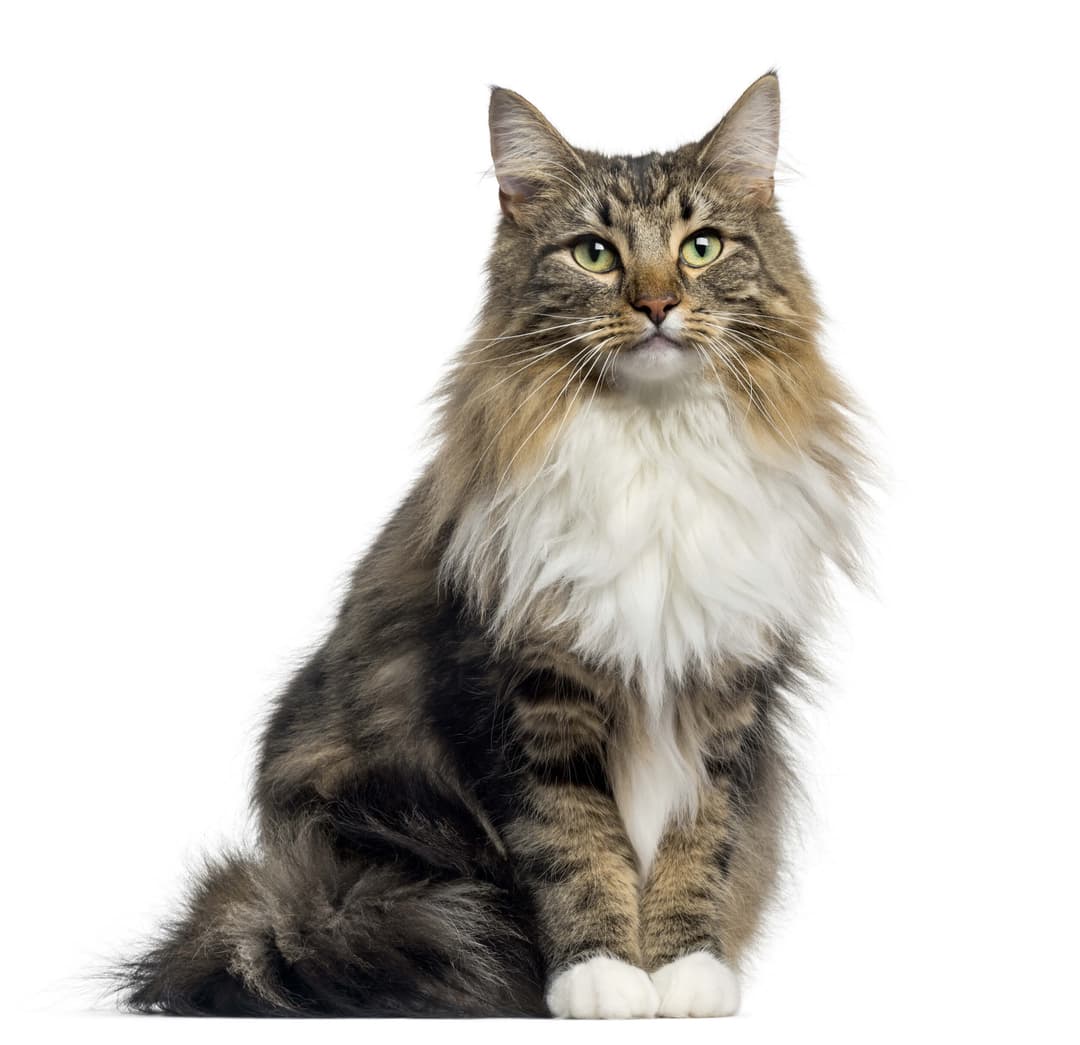Discover your cat's connection to this breed and 20 others


Discover your cat's connection to this breed and 20 others



Norwegian Forest Cats are exceptionally loyal companions known for their loving and gentle nature. These intelligent, longhaired beauties love to climb to new heights and observe their environment with their large, expressive eyes.
Also known as the "mystic wildcat of fairy tales", the semi-longhaired Norwegian Forest Cat breed is believed to be around 1000 to 2000 years old. This breed is frequently mentioned in Norwegian urban myths and folklore and is very popular across much of Northern Europe. These strong and sturdy cats originated in Norway, and are well-suited to brutal winters with insulated, waterproof double coats that feature longer, coarse guard hairs over a dense undercoat. They are further distinguished by their large, almond-shaped eyes, triangle-shaped head and ears, and straight side profile (from their brow ridge to the tip of their nose).
Some believe that the ancestors of this breed include black and white shorthair cats brought from Great Britain and longhaired cats introduced by the Crusaders. Others theorize that their ancestry lies with the Russian Siberian cat and the Turkish Angora. The breed was recognized and registered in Europe in the 1970s and was accepted for full championship status by the Cat Fanciers’ Association in 1993.
Norwegian Forest Cats are highly intelligent and have a sweet, calm temperament. They are social, friendly, and get along well with children and other pets. While they highly appreciate the company of their favorite humans, they do so on their own terms. These kitties love to explore, and their strong claws make them excellent climbers. A scratching post or a tall cat tree will go a long way toward entertaining these beautiful and majestic kitties.
Published studies have shown the Norwegian Forest Cat, among several other breeds, to be at a higher risk for diabetes mellitus. In a 2007 study, a complex rearrangement in the gene that codes for the glycogen branching enzyme (GBE1) was identified in some Norwegian Forest Cats. The rearrangement causes glycogen storage disease type IV, characterized by a perinatal hypoglycemic collapse and a late-juvenile-onset neuromuscular degeneration. The breed is also known to suffer from hip dysplasia.
They are Norway’s national cat. Their "Viking Cat" title was designated by King Olav V of Norway (born as Prince Alexander of Denmark).
Norwegian Forest cats were the favorites of Freya. Norse mythology (mythology of the North Germanic people), claims that the breed was the favorite kind of Freya, the goddess of love, beauty, fertility and health. Farmers believe that if they left milk out for Freya’s cats that they would be blessed with a bountiful harvest when she passed through their fields.
Thor, the god of thunder, could not lift a Norwegian Forest Cat. A famous legend holds that the hammer-wielding god associated with lightning, thunder,and strength lost a contest to his enemy Jormungand, the middle child of Loki, who came disguised as a Norwegian Forest cat.
They are mountain-dwelling fairy cats. Other Norwegian myths describe this glorious feline as a "mountain-dwelling cat with the ability to climb sheer rock faces that other cats could not manage". The myth has turned out to be true, since Norwegian Forest Cats are known for their exceptionally strong claws and ability to climb rocks!
They can scare the trolls away. Once upon a time, a farmer was having a Christmas supper with a group of trolls. A wanderer and his pet bear came by to spend the night during the feast. One troll, thinking the bear was the wanderer’s cat, offered the beast some food. The beast let out a fearsome growl instead! Because trolls are terrified of thunder, they all ran away, forever afraid of cats. Other tales describe the Norwegian Forest cats turning into trolls and trolls turning into cats.
Recommended by top vets with decades of experience
21 breeds
64 genetic health markers
50 genetic trait markers
